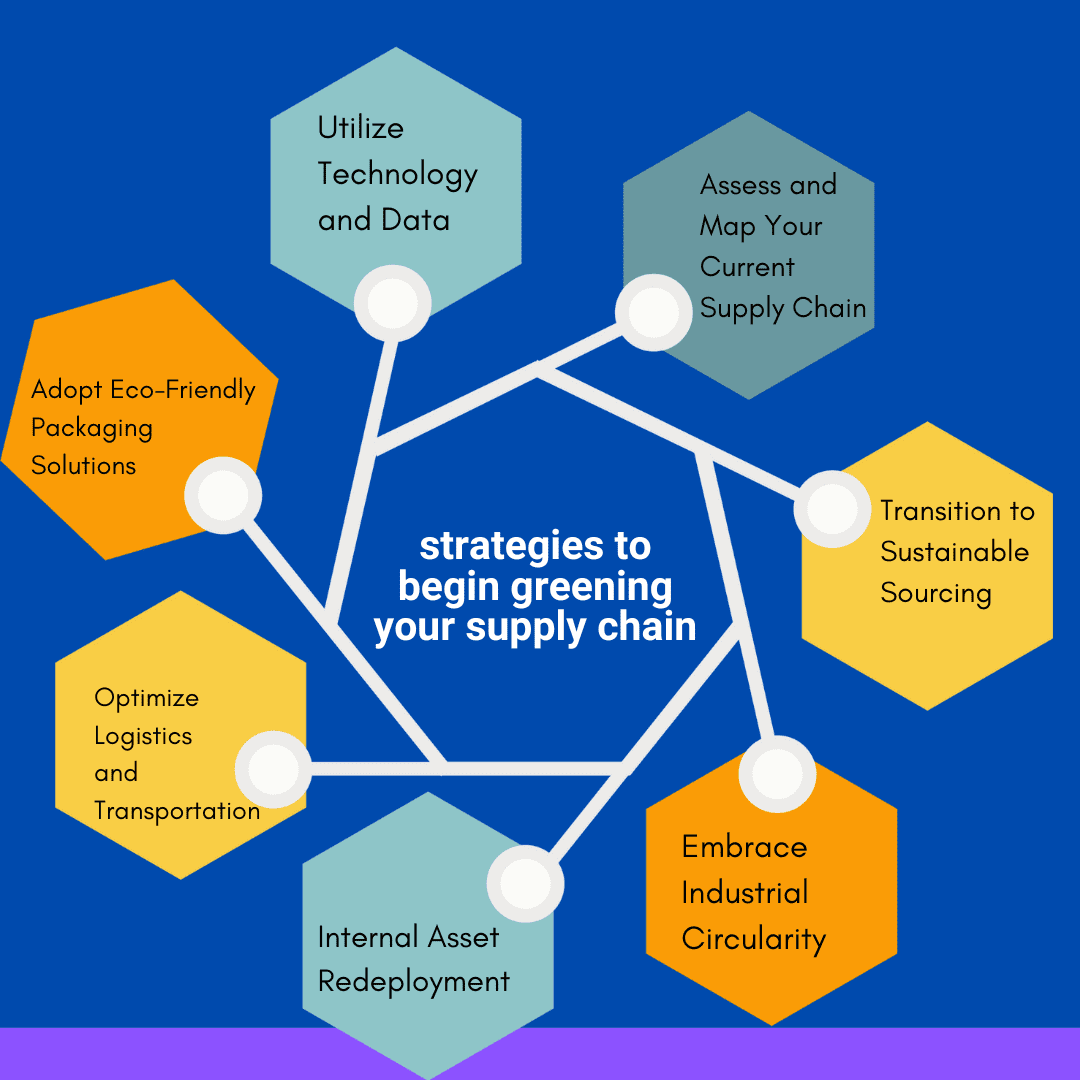Greening your supply chain refers to the process of integrating environmentally sustainable practices across all stages of your supply chain. It involves optimizing resource use, reducing carbon emissions, minimizing waste, and adopting circular economy principles. By addressing these areas, your organization can create a more resilient supply chain, one that is efficient, environmentally responsible, and better able to adapt to disruptions.
This transition toward sustainability is no longer optional. Customers now actively choose brands based on environmental responsibility, with over 60% of U.S. consumers willing to pay more for products with sustainable packaging, according to McKinsey. Regulatory bodies are enforcing stricter environmental standards, and investors closely monitor sustainability performance, increasingly linking funding to clear environmental targets. As a result, businesses face mounting pressure to demonstrate concrete actions toward greener supply chains.
In this article, you’ll learn strategies to begin greening your supply chain and respond effectively to these expectations.

- Assess and Map Your Current Supply Chain
The first step in greening your supply chain is a structured assessment of your existing operations. Map resource flows from raw material sourcing to finished goods delivery, documenting each supplier, transportation route, and process.
Identify where the most significant environmental impacts occur, such as energy-intensive steps, high-waste areas, or suppliers with limited sustainability controls. A focused baseline assessment of material inputs, energy consumption, and waste generation enables you to prioritize actions and set clear, measurable targets for improvement.
This systematic approach provides the visibility you need to drive meaningful change and demonstrate progress to stakeholders.
- Transition to Sustainable Sourcing
Shifting your procurement practices toward sustainable sourcing significantly reduces your supply chain’s environmental impact. Start by selecting raw materials and components known for lower energy intensity, recyclability, or reduced environmental footprint.
Partner with suppliers who hold credible sustainability certifications, such as ISO 14001, FSC, or verified recycled content. Certified suppliers assure that materials and processes meet established environmental standards, simplifying your compliance and sustainability reporting.
These sourcing practices directly improve environmental performance, enhance supply chain resilience, and reduce operational risk.
- Embrace Industrial Circularity
Adopting industrial circularity is a smart strategy for any business that wants to optimize resources and build a greener supply chain.
Buying used equipment and machinery is a practical way to support industrial circularity. Instead of purchasing new, you tap into existing assets that are still in excellent working condition. This extends the useful life of equipment and helps reduce both waste and capital spending.
Sourcing pre-owned machinery from reputable sellers gives you access to quality equipment at a lower cost. You avoid long lead times and reduce your environmental footprint. For many businesses, used assets deliver the same performance as new without the premium price tag.
When you choose used equipment, you free up capital for other priorities and keep valuable resources in circulation. This approach makes your operation more agile and cost-efficient, while also contributing to landfill diversions.
- Internal Asset Redeployment
Internal asset redeployment is a practical, sustainable way to maximize the value of your existing assets while minimizing environmental impact. Instead of defaulting to new purchases, review your current inventory to identify surplus, idle, or underutilized resources that could be put to use elsewhere in your organization.
By transferring equipment, parts, or supplies between sites or departments, you extend the lifecycle of valuable assets, reduce waste, and lower procurement costs. This not only avoids unnecessary disposal but also limits the need for new production, contributing to lower carbon emissions and advancing your sustainability targets.
Centralized inventory management tools make this process even more efficient, giving you visibility across all locations so you can quickly identify surplus, match it to internal demand, and coordinate transfers. With the right systems in place, you can streamline redeployment, minimize downtime, and ensure valuable resources are put to their best use.
- Optimize Logistics and Transportation
Optimizing logistics and transportation is a direct way to reduce environmental impact while improving operational efficiency. By reviewing current routes, shipment schedules, and load management practices, you can pinpoint sources of excess fuel consumption and unnecessary emissions.
Consolidating shipments and maximizing truck or container loads helps eliminate wasted capacity and reduces the frequency of deliveries. This not only cuts fuel costs but also lowers your carbon footprint. When possible, prioritize local and regional suppliers to further shorten delivery distances and simplify logistics management.
Incorporating carriers with low-emission vehicles or alternative fuel fleets can advance your sustainability commitments and provide an additional edge in meeting regulatory requirements.
- Adopt Eco-Friendly Packaging Solutions
Eco-friendly packaging is a practical step in reducing waste and lowering your supply chain’s environmental impact. Start by assessing current materials and switching to recycled, recyclable, or biodegradable options to support compliance and sustainability targets.
Streamlining your packaging design further reduces material use and helps optimize shipping efficiency. Right-sized packaging decreases freight costs and emissions while simplifying storage and handling processes.
Work with suppliers to identify sustainable packaging alternatives and, where possible, adopt reusable or returnable systems. These actions not only cut waste but also demonstrate your commitment to responsible sourcing and market leadership.
- Utilize Technology and Data
Real-time data and digital technology are key enablers of a more efficient, sustainable supply chain. By installing IoT sensors, Supervisory Control and Data Acquisition (SCADA) systems, and automation platforms, you gain immediate visibility into energy use, material flows, and equipment performance. This data allows you to spot inefficiencies and respond before they escalate into higher costs or unnecessary waste.
Advanced analytics platforms can identify patterns, predict maintenance needs, and help optimize production schedules. Integrating these tools with your inventory and procurement systems further supports accurate forecasting and optimized operations.
Adopting real-time monitoring and analytics gives your team the information needed to make informed decisions, minimize resource losses, and continuously improve supply chain performance.
Conclusion:
Greening your supply chain is now non-negotiable, optimize resources, cut emissions, and strengthen resilience. Begin with a clear baseline: map suppliers, routes, and processes to target the highest-impact fixes. Shift to sustainable sourcing, circular asset strategies (buy used, redeploy internally), right-sized packaging, and efficient logistics.
Tie it together with real-time data and analytics to track progress, meet compliance, lower costs, and continuously improve.
Author Name: Luke Crihfield
Bio:
Director of Demand Gen at Amplio, helping manufacturers turn surplus into opportunity through Al-driven growth.
LinkedIn: https://www.linkedin.com/in/luke-crihfield



































